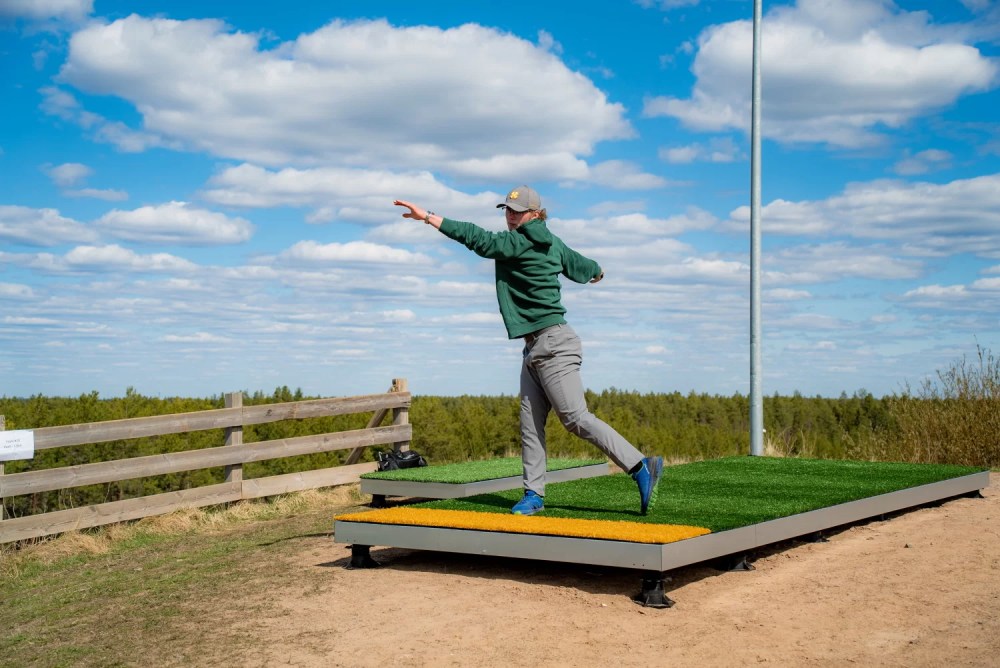Yes, there are some raised tee pads in tournaments. You should watch tournament videos, there are lots of complaints about raised tee pads. Watch James Conrad's run up.....he is one player who has tripped on raised tee pads - there's others. There's a video of someone falling off the end of a raised tee pad in a tournament...it was a while ago and I don't recall the year or course.
Cost. Way too expensive. There's lots of course builders/maintainers that have trouble just affording concrete tee pads, much less something this expensive.
For those two reasons, I don't see this as a feasible idea that will work out. But good luck - I hope you prove me wrong.
Okay, I see the point you are making. Raised teepads might be a problem for some. Majority of people are not like James Conrad. And majority of fairways doesn't need so much speed on opening throw. So my point is, that we are offering a solution which solves many challenges and fits in to many courses. Not for all, but many or even most.
Same goes for concrete teepads too. They can't be used in every scenario. Let's take one example. Up north where frosting is a seasonal fact. Concrete teepad would be very labor and cost expensive in order to make durable enough. Otherwise it will crack over the winter.
Costs are again one thing which should be considered also including scaling factor. To scale you need to be able to deliver the products without adding costs per unit when making more. Flatpad is actually getting cheaper when scaling up, due manufacturing process. Concrete ones will do opposite. Those are machine and labor intensive, thus expensive to scale. Not to mention shipping costs at all.
Cost should also be considered how much they are per rounds played. As an example let's take one course nearby my location. Meri-Toppila Oulu Finland.
https://udisc.com/courses/meri-toppila-3E4R
2021 Udisc has 14071 recorded rounds played. Udiscs estimates that only every fifth is recorded on their app. So actual played rounds would be 14071 * 5 = 70355. This course needs and update on teepads, so let's do them on using Flatpad Flat 4.2. The lifetime of Flatpad is more than 10 years, but let's use something lower like 5 years. After that period they would be renewed. To get all 18 hole done by Flatpad, the direct cost would be 18 * 1999€ / 2092$ = 35982€ / 37656$. Within 5-years there would be 70355 * 5 = 351775 rounds played. Direct costs divided by rounds played and direct costs per round would be 0,1€ / 0,1$. For me it doesn't sound expensive at all. On many courses there's actually round fee that you need to pay. By doing the math in this way you might see how it starts to make sense.
I'm not here to say that our products are one fits to all solution. I'm trying to explain how teepads can be done in a new way and how it's benefits the sport and people in and around it. I know that Flapad fits and works in various places. In many cases it's easily the best solution to choose.
Prices on our website includes VAT 24%. So for business buyers and for example US customers it would be deducted. Also we have priced in the re-seller's share. We would be happy to get a distributor and re-seller's in north America.
